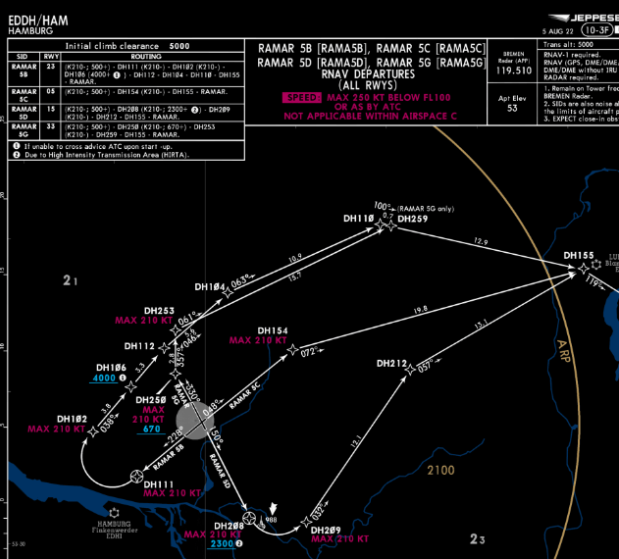An initial altitude is a predetermined altitude an aircraft will climb to after departing an airport. Initial altitudes are different at each airport, and are crucial to preventing conflicts in busy airspace, acting as a ‘buffer’ for controllers to work around. Initial altitudes (or climbs) are usually not your cruise altitude.

Here is a departure at EGSS (UTAVA1R). We can see that the waypoints from D5.0 BKY onwards have a restriction of 4000ft. We can also see a warning at the top of the chart, telling pilots not to climb above 4000ft. As such, we can tell 4000ft is our initial altitude. A line below an altitude means you must be above it. A line above the altitude means you must be below it, and a line both above and below it (as seen above) means you must be at that altitude. At D5.0 BKY you must be between 3000 and 4000.

Here is another example, where there is no ‘above’ limit on the altitudes as denoted by the line below the blue altitude, however, there is still an initial altitude. In the top left we can see the initial climb is 5000ft. It’s important to note that the transition altitude is also 5000ft, however the initial climb is 5000ft, not FL050, so you must remain on the local pressure until you climb above it.
Where an initial climb is not published on the chart, or where there is a lack of charts, ATC will issue you an initial climb in either the clearance, or takeoff clearance. As soon as you get your initial climb, set it on your MCP to ensure you don’t bust it.
Here are some tips!
– Always make sure you check before you bust!
– Make sure you preset the Initial Altitude in the MCP prior to take off.
– Ask the controller if you are unsure what the initial climb is.
– Ensure you are following any other restrictions on the SID, such as speed restrictions.

